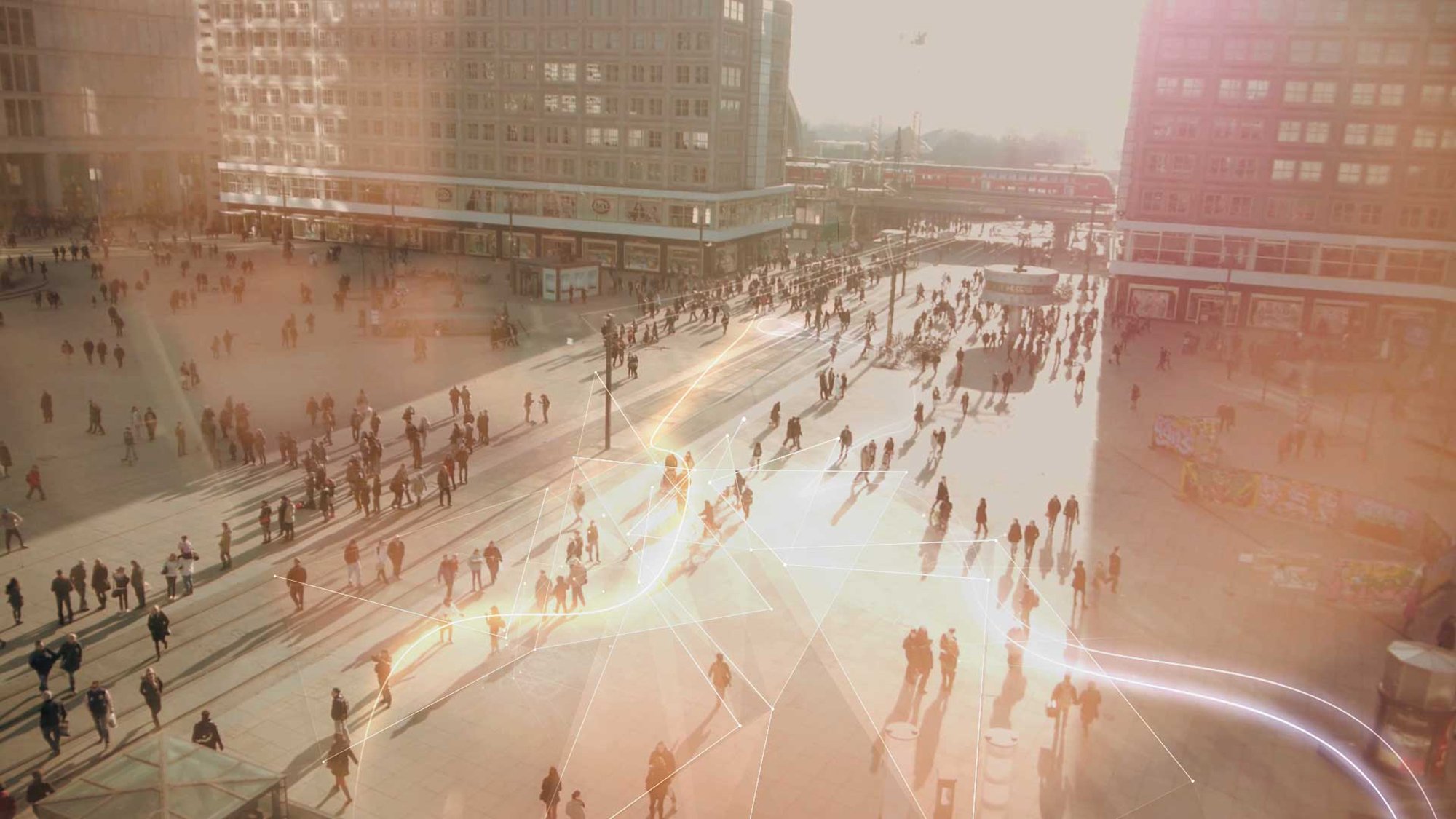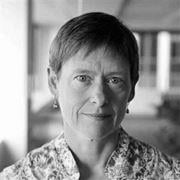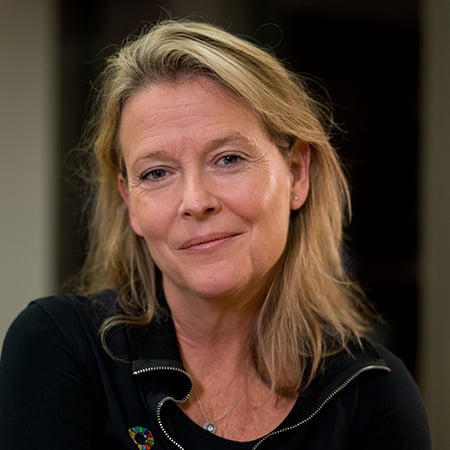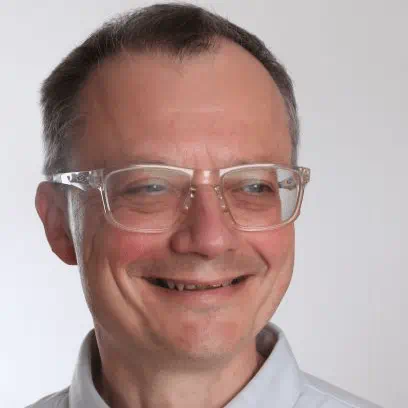Achieving a zero carbon built environment
CO2 emissions from transportation, buildings and industrial processes are the biggest drivers of global warming. Across the world, government policies and regulations are being introduced, demanding that existing buildings meet net zero carbon emissions. We are working to reduce operational energy use in existing and new buildings, as well as decarbonising our transport systems. And we’re also constantly experimenting with achieving lower emissions through design, manufacture and construction.
Analytics plays a central role in achieving these system-level improvements. Our teams are now able to analyse and classify existing buildings by era, profiling the most cost and carbon-effective pathways to decarbonizing existing buildings. We’re also using digital techniques to achieve a step change in the range of design alternatives we explore. We used this technique for the National Resources Defense Council in New York City, transforming its existing 1980s headquarters into an ‘energy positive’ building.
Circular economy
Given the built environment industry’s considerable impact on embodied carbon emissions, we have been pursuing ways to introduce circular economy principles into the design, construction and operation of buildings. This means eliminating waste, designing elements for re-use, and keeping everything in use for longer.
Across the industry, digital materials passports are increasingly being seen as a way to codify and manage the use of resources, ensuring they’re more easily repurposed when a building or asset reaches the end of its (first) life. This approach is evolving, sometimes using blockchain as a ledger of materials’ core attributes, and past and future uses. We are working with the UK’s largest brick manufacturer to establish a sustainability data strategy, one that draws on circular economy principles.
Digital fabrication, especially additive manufacturing, is another way to minimise material use. Our work with MX3D on a ‘3D printed’ steel bridge in Amsterdam, demonstrated how the technique has matured and can be used to develop beautiful, unique structures that are hard-wearing and waste almost zero materials during construction. As with every part of the climate change challenge, energy use must still be monitored closely, but it’s a process that promises to align digital design and sustainable outcomes ever closer.
Protecting the natural world
It’s clear that future economic development must take account of the planet’s ecosystem boundaries. Digital tools and data analytics are increasing our understanding of natural systems, leading to more sustainable solutions. The ultimate goal? To get to a place where we can start to 'regenerate' the ecosystems we share and rely on.
Of course, making progress means first understanding the scale of the problems we face. We have developed a digital land analysis tool that is helping clients to measure our impact on the wild. It can analyse large areas of land through detailed satellite photos, and uses machine learning to categorise everything from land use to deforestation to flood risks.
Digital tools like GIS (geographic information systems) are also proving valuable on long-term rewilding projects like the one at Alladale Wilderness Reserve, in Scotland. Once more, technology is bringing a forensic quality to our analysis of land and natural systems, enabling more effective planning and decision making.
Putting geographic technology to use
We help you analyse and understand the physical world. It’s a powerful combination of science, human experience and data analytics – helping us to make better decisions about the planet.
Learn more about our expertiseImproving human health and wellbeing
The health and wellbeing implications of building design are increasingly well understood – and data is helping us to improve the human experience in a number of related ways. Our intelligent building management system, Neuron Health, brings together operational data about an environment – air quality, temperature, humidity and levels of pathogens in the air, helping building managers to identify the connections between indoor air quality and occupants’ health.
During the COVID-19 pandemic our City Modelling Lab and MassMotion tools were able to bring the power of data analytics and modelling to understand the intersection of human behaviour and virus outcomes. Once the pandemic is over, the public are likely to demand more information about the health of every environment, from transport hubs to shops and entertainment centres. We foresee a new digital focus on health in the built environment, a trend we discuss on Perspectives.
Technology can also help us to improve health and safety outcomes. Our Arup Inspect3D tool, part of our integrity management service, reduces the reliance on in-person inspection of challenging remote sites, like energy infrastructure or building’s facades. Find out more about Arup Integrity Management.
Resilient communities
Climate change is exposing longstanding vulnerabilities and presenting countries with new ones. Data analytics are helping us to respond, finding new ways to increase the physical resilience of the built environment. Our work on the City Resilience Index takes a data-driven approach to the detailed web of risks a city or locality faces, clarifying the actions leaders should take.
Environmental threats are increasingly shaping investment decisions, and groups like the Taskforce for Climate-related Financial Disclosure are pushing for greater reporting on organisations' exposure to climate risks. Our advisory services team helps clients to assess and define these risks, bringing digital rigour to their ESG strategy.
Socially valuable, digitally powerful
Data can illuminate and inform our understanding of human priorities too. As the COVID-19 pandemic unfolded in America, it was quickly clear the economic shutdown would cause a rise in homelessness. Our data analytics team worked with housing NGO, New Story, on a tool to help them target support to communities most at risk of losing their homes. We combined a group of disparate public data sets including demographic, economic, regional information, before rating the risks and helping the charity to shape its response.
Given our industry’s often wasteful practices – sending unwanted or unused materials to landfill is still too common – we saw another opportunity to use digital to solve a social problem. We have developed DigiYard, a platform that brings together construction sites with those running informal settlements, matching materials to the needs of the homeless.
Meet our people







